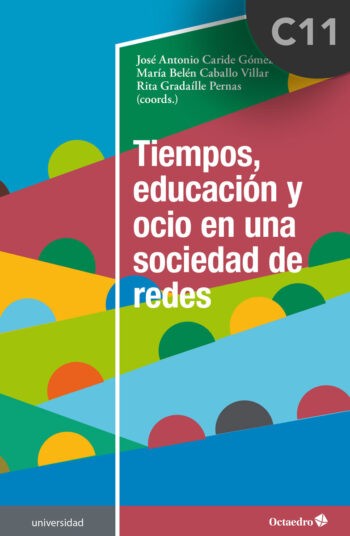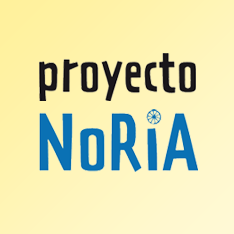Referencias bibliográficas
- Ariès, P. (1960). L´enfant et la vie familiale sous l´Ancien Régime. París: Éditions du Seuil.
- Bajo, F. y Betrán, J. L. (1998). Breve historia de la infancia. Madrid: Temas de Hoy.
- Becchi, E. y Julia, D. (eds.) (1996). Storia dell’infanzia. Bari: Laterza.
— (dirs.) (1998a). Histoire de l’enfance en Occident, tome 1: De l’antiquité au XVIIe siécle. París: Éditions du Seuil.
— (dirs.) (1998b). Histoire de l’enfance en Occident, tome 2: Du XVIII siècle à nos jours. París: Éditions du Seuil.
- Bossard, J. H. (1948). The Sociology of Child Development. Nueva York: Harper.
- Boyle, D. (2003). The little money book. Nueva York: Alastair Sawday.
— (2014). The Potential of Time Banks to support Social Inclusion and Employability. An investigation into the use ofreciprocal volunteering and complementary currencies for social impact. Luxemburgo: Publications Office of the European Union.
- Cahn, E. (2004). No más gente desechable. La coproducción, un imperativo. Washington D.C.: Essential Books.
- Carfagna, L. B., Dubois, E. A., Fitzmaurice, C., Ouimette, M., Schor, J., Willis, M. y Laidley, T. (2014). An emerging eco-habitus: the reconfiguration of high cultural capital practices among ethical consumers. Journal of Consumer Culture, 14(2), 158-178.
- Caride, J. A. (2018). Lo que el tiempo esconde, o cuando lo social necesita de la pedagogía. Pedagogía Social. Revista Interuniversitaria, 32, 17-29.
- Carrasco, C. Mayordomo, M., Domínguez, M. y Alabart, A. (2004). Trabajo con mirada de mujer. Propuesta de una encuesta de población activa no androcéntrica. Madrid: Consejo Económico y Social.
Carrasco, C., Borderías, C. y Torns, T. (2011). El trabajo de cuidados. Historia, teoría y políticas. Madrid: Catarata.
- Caspard, P. (2001). La infancia, la adolescencia, la juventud. Para una economía política de las edades desde la época moderna. En: Martínez Moctezuma (coord.). La infancia y la cultura escrita. México: Siglo XXI.
- Collom, E. (2007). The Motivations, Engagement, Satisfaction, Outcomes, and Demographics of Time Bank Participants: Survey Findings from a U.S. System. International Journal of Community Currency Research, 11, 36-83.
- Compére, M. M. (1995). L’histoire de l’education en Europe. Essai comparatif sur la façon dont elle s’écrit. París: Peter Lang.
Convención sobre los Derechos del Niño. Boletín Oficial del Estado. Madrid, 31 de diciembre de 1990, num. 313, pp. 38897-38904.
- Creus, A. y Domingo, L. (2013). Miradas sobre la infancia. Cuadernos de Pedagogía: Aprender a ser maestra, hoy, 436, 26-29.
- Dávila, P. y Naya, L. M. (coords.) (2005). La infancia en la historia: espacios y representaciones (vols. i-ii). Donostia: EREIN.
- Del Moral, L. (2017). Sharing is caring: mediterranean time banking in a multidimensional crisis scenario. International Journal of Community Currency Research, 21, 33-50.
- Del Moral, L. y Pais, I. (2015). Collaborative economy and the digitalization of timebanking: opportunities and challenges. Studi di Sociologia, 1, 3-21.
- DeMause, Ll. (1994). Historia de la infancia. Madrid: Alianza Universidad.
- Dittmer, K. (2013). Local currencies for purposive degrowth? A quality check of some proposals for changing money-as-usual. Journal of Cleaner Production, 54, 3-13.
- Diz, I. (2009). Los Bancos del Tiempo en Galicia. Legislando el tiempo y la participación con el objetivo de la igualdad. En: De La Fuente, M. y Freixanet, M. (coords.). Polítiques de gènere: participació ciutadana al món local (pp. 151-177). Barcelona: ICPS.
- Dubois, E., Carfagna, L. y Schor, J. (2011). The boston time trade circle: social and cultural capital in an alternative institution. Boston: Boston College.
- Elias, N. (1987). El proceso de la civilización: investigaciones sociogenéticas y psicogenéticas. México: Fondo de Cultura Económica.
- Foucault, M. (1975). Surveiller et punir. Naisance de la prison. París: Gallimard.
- González, R., Benavides, G. y Montoya, I. (2000). Preparación psicológica basada en el juego. En: Ortigosa, J. y Méndez, F. (eds.). Hospitalización Infantil. Repercusiones psicológicas (pp. 95-118). Madrid: Biblioteca Nueva.
- Gradaílle, R. y Merelas, T. (2011). Los tiempos sociales en clave de género: las respuestas de la Educación Social. Educación Social. Revista de Intervención Socioeducativa, 47, 54-62.
Griffith, D., Ober, J., Hill, E., Robinson, K., Lewis, E. Y., Campbell, B., Morrel, S., Sparks, A.,
- Zimmerman, M. A. y Reischl, T. (2010). Community-Based Organizational Capacity Building as a Strategy to Reduce Racial Health Disparities. J Primary Prevent, 31, 31-39.
- Hughes, N. (2015). The community currency scene in Spain. International Journal of Community Currency Research, 19, 1-11.
- Laverack, G. y Wallerstein, N. (2001). Measuring community empowerment: a fresh look at organizational domains. Health Promotion International, 16(2), 179-185.
- Lizasoáin, O. (2011). Pedagogía Hospitalaria. Compendio de una década. Logroño: Siníndice.
- Molnar, S. (2011). Time is of the essence: the challenges and achievements of a swedish time banking initiative. International Journal of Community Currency Research, 15(A), 13-22.
- North, P. (2011). Geographies and utopias of Cameron’s Big Society. Social & Cultural Geography, 12(8), 67-70.
- Ozanne, L. K. y Ozanne, J. L. (2011). The social negotiation of new transitional forms of exchange: from environmental critique to community building. En: Bradshaw, A., Hackeley, C. y Maclaran, P. (eds.). European Advances in Consumer Research (pp. 44-46). Londres: Association for Consumer Research.
- Rappaport, J. (1987). Terms of Empowerment/Exemplars of Prevention: toward a theory for community psychology. American Journal of Community Psychology, 15, 121-148.
Resolución del Parlamento Europeo sobre una Carta Europea de los Derechos del Niño Hospitalizado. Diario Oficial de las Comunidades Europeas. 13 de mayo de 1986.
- Seyfang, G. (2003). Growing Cohesive Communities One Favour at a Time: Social Exclusion, Active Citizenship and Time Banks. International Journal of Urban and Regional Research, 27(3), 69999-706.
— (2004). Batering for a better future? Community currencies and sustainable consumtion. Center for Social and Economic Research on the Global Environment (CSERGE). Working Paper. University of East Anglia, Norwich, NR4 7TJ, Reino Unido.
- Seyfang, G. y Longhurst, N. (2013). Growing green money? Mapping community currencies for sustainable development. Ecological Economics, 83, 65-77.
- Shields, L. y Nixon, J. (1998). I want my mummy. Changes in the care of children in hospital. Collegian, 5(2), 16-23.
- Ulivieri, S. (1986). Historiadores y sociólogos en busca de la infancia. Apuntes para una bibliografía razonada. Revista de Educación, 281, 48.
- Ullán, A. M. y Belver, M. H. (2005). Los niños en los hospitales. Espacios, tiempos y juegos en la hospitalización infantil. Salamanca: Témpora.
— (2008). Cuando los pacientes son niños. Humanización y calidad en la hospitalización pediátrica. Madrid: Eneida.
- Valor, C. y Papaoikonomou, E. (2016). Time Banking in Spain. Exploring their structure, management and users’ profile. Revista Internacional de Sociología, 74(1), e028.
- Zimmerman, M. A. (2000). Empowerment Theory, Psychological, Organizational and Community Levels of Analysis. En: Rappaport, J. y Seidman, E. (eds.). Handbook of Community Psychology (pp. 43-63). Nueva York: Kluwer Academic / Plenum Publishers.











